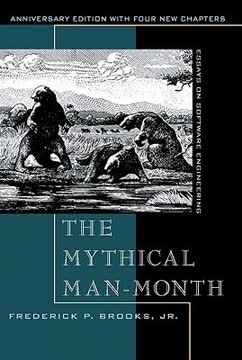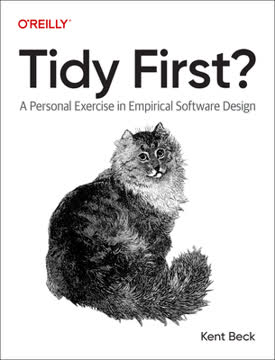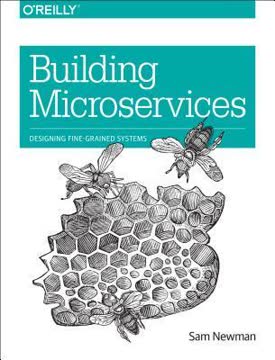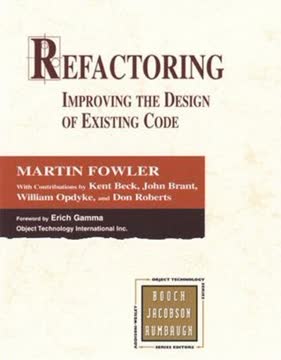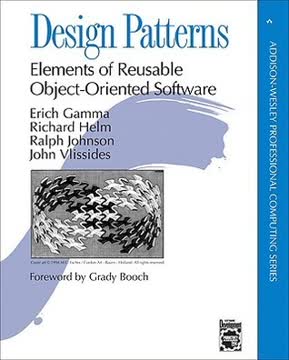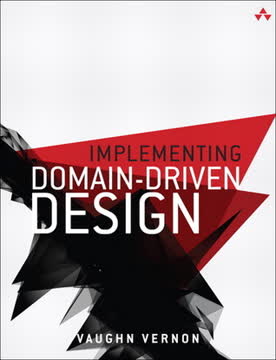ข้อสำคัญ
1. DDD ช่วยเชื่อมโยงซอฟต์แวร์กับความเข้าใจทางธุรกิจ
ด้วยการนำ Domain-Driven Design มาใช้ Vaughn ได้สร้างผลงานที่สำคัญไม่เพียงแต่ในวงการ Domain-Driven Design เท่านั้น แต่ยังรวมถึงวงการสถาปัตยกรรมแอปพลิเคชันองค์กรโดยรวมด้วย
การเชื่อมช่องว่าง. Domain-Driven Design (DDD) คือแนวทางพัฒนาซอฟต์แวร์ที่เน้นการทำให้โมเดลซอฟต์แวร์สอดคล้องกับโดเมนธุรกิจอย่างแท้จริง โดยเน้นการสื่อสารและความร่วมมือระหว่างผู้เชี่ยวชาญโดเมนและนักพัฒนา เพื่อสร้างความเข้าใจร่วมกันในธุรกิจ ความเข้าใจนี้จะสะท้อนอยู่ในโค้ด ทำให้ซอฟต์แวร์ใช้งานง่ายและดูแลรักษาได้สะดวกขึ้น
ภาษาสากล (Ubiquitous Language). หัวใจของ DDD คือแนวคิดภาษาสากล ซึ่งเป็นคำศัพท์ที่ทุกคนในโครงการใช้ร่วมกัน ไม่ว่าจะเป็นผู้เชี่ยวชาญโดเมน นักพัฒนา หรือผู้ทดสอบ ภาษาเดียวกันนี้ใช้ในการอธิบายแนวคิดและกฎของโดเมนธุรกิจ และสะท้อนในโค้ด เอกสาร และการสื่อสาร ช่วยลดความสับสนและเพิ่มประสิทธิภาพในการทำงานร่วมกัน
มากกว่าการเขียนโค้ดไร้บั๊ก. DDD ไม่ได้มุ่งแค่การส่งมอบซอฟต์แวร์ที่ไม่มีบั๊กเท่านั้น แต่ยังมุ่งสร้างโมเดลซอฟต์แวร์ที่สะท้อนโดเมนธุรกิจอย่างแม่นยำ ช่วยให้ปรับตัวตามความต้องการธุรกิจที่เปลี่ยนแปลงได้ง่าย และสื่อสารกับผู้มีส่วนได้ส่วนเสียได้อย่างมีประสิทธิภาพ โดยเน้นคุณค่าทางธุรกิจและการรวมความรู้ไว้ตรงกลาง DDD ช่วยให้องค์กรสร้างซอฟต์แวร์ที่ตอบโจทย์ความต้องการอย่างแท้จริง
2. การออกแบบเชิงกลยุทธ์เน้นคุณค่าหลักของธุรกิจ
มุ่งเน้นที่โดเมนหลัก (Core Domain)
ให้ความสำคัญกับสิ่งจำเป็น. การออกแบบเชิงกลยุทธ์ใน DDD คือการระบุส่วนที่สำคัญที่สุดของโดเมนธุรกิจ หรือที่เรียกว่าโดเมนหลัก และมุ่งเน้นการพัฒนาในส่วนนี้ก่อน เพื่อให้การลงทุนด้านซอฟต์แวร์สอดคล้องกับกลยุทธ์ของธุรกิจ และส่งมอบฟีเจอร์ที่มีคุณค่ามากที่สุดก่อน นอกจากนี้ยังต้องเข้าใจโดเมนย่อย (Subdomains) และความสัมพันธ์กับโดเมนหลักด้วย
โดเมนย่อยและการจัดแนวกลยุทธ์. โดเมนย่อยคือส่วนย่อยที่จัดการได้ง่ายของโดเมนธุรกิจโดยรวม การระบุและเข้าใจโดเมนย่อยช่วยให้ทีมจัดสรรทรัพยากรและลำดับความสำคัญของการพัฒนาได้ดีขึ้น การออกแบบเชิงกลยุทธ์ยังช่วยกำหนดความสัมพันธ์ระหว่างทีมงานและสร้างระบบเตือนล่วงหน้าเมื่อความสัมพันธ์นั้นอาจนำไปสู่ความล้มเหลวของซอฟต์แวร์หรือโครงการ
เกินกว่าการวิเคราะห์ทางเทคนิค. การออกแบบเชิงกลยุทธ์ไม่ได้จำกัดแค่การวิเคราะห์ทางเทคนิคเท่านั้น แต่เน้นไปที่ทิศทางกลยุทธ์ของธุรกิจ ช่วยกำหนดความสัมพันธ์ระหว่างทีมงานและระบบเตือนล่วงหน้าเพื่อป้องกันความล้มเหลว ด้านเทคนิคมีเป้าหมายเพื่อกำหนดขอบเขตของระบบและความรับผิดชอบทางธุรกิจอย่างชัดเจน เพื่อปกป้องบริการในระดับธุรกิจแต่ละส่วน
3. Bounded Context กำหนดขอบเขตการใช้โมเดล
Bounded Context คือขอบเขตที่ชัดเจนซึ่งโมเดลโดเมนหนึ่ง ๆ มีผลบังคับใช้
จำกัดขอบเขต. Bounded Context คือขอบเขตเชิงแนวคิดที่กำหนดว่าโมเดลโดเมนใดใช้ได้ในบริบทนั้น ๆ ขอบเขตนี้กำหนดขอบเขตของภาษาสากลและทำให้คำศัพท์และแนวคิดในโมเดลมีความหมายชัดเจนและสอดคล้องกัน ป้องกันไม่ให้โมเดลซับซ้อนเกินไป
ความหมายตามบริบท. ภายใน Bounded Context ทุกคำและวลีจะมีความหมายเฉพาะตามบริบทนี้ ช่วยลดความกำกวมและทำให้ทุกคนในทีมเข้าใจแนวคิดที่กำลังถูกจำลอง การใช้คำว่า “ubiquitous” ไม่ได้หมายถึงภาษาที่ใช้ทั่วทั้งองค์กรหรือทั่วโลก แต่หมายถึงภาษาที่ใช้ร่วมกันในบริบทนั้น ๆ
ภาษาสากลหนึ่งภาษาในแต่ละ Bounded Context. การใช้ Bounded Context ช่วยแยกและจัดการโมเดลอย่างเหมาะสม ซึ่งเป็นคุณค่าทางธุรกิจที่ช่วยให้ความรู้ทางธุรกิจคงอยู่ยาวนานเกินกว่าระยะเวลาการพัฒนาซอฟต์แวร์ในช่วงแรกและทีมที่สร้างมัน จุดนี้ทำให้ต้นทุนการพัฒนาซอฟต์แวร์กลายเป็นการลงทุนที่คุ้มค่า ไม่ใช่แค่ต้นทุนที่ต้องจ่าย
4. Context Maps ช่วยมองเห็นการเชื่อมต่อระบบ
Context Maps คือเครื่องมือที่ทรงพลังช่วยให้ทีมเข้าใจโดเมนธุรกิจ ขอบเขตระหว่างโมเดลต่าง ๆ และวิธีการเชื่อมต่อระบบในปัจจุบันหรือในอนาคต
เข้าใจความสัมพันธ์. Context Maps คือแผนภาพที่แสดงความสัมพันธ์ระหว่าง Bounded Context ต่าง ๆ ในองค์กร แสดงให้เห็นว่าโมเดลในแต่ละบริบทมีปฏิสัมพันธ์กันอย่างไรและข้อมูลไหลผ่านอย่างไร ช่วยให้ทีมเข้าใจการพึ่งพาระหว่างระบบและระบุปัญหาการเชื่อมต่อที่อาจเกิดขึ้น
การทำแผนที่ภูมิประเทศ. Context Maps ไม่ใช่แค่การวาดแผนภาพสถาปัตยกรรมระบบ แต่เป็นการเข้าใจความสัมพันธ์ระหว่าง Bounded Context ต่าง ๆ ในองค์กรและรูปแบบการแมปวัตถุจากโมเดลหนึ่งไปยังอีกโมเดลหนึ่ง การใช้เครื่องมือนี้สำคัญต่อความสำเร็จในการจัดการ Bounded Context ในองค์กรธุรกิจที่ซับซ้อน
รูปแบบการเชื่อมต่อ. Context Maps ยังช่วยระบุรูปแบบการเชื่อมต่อระหว่าง Bounded Context เช่น Shared Kernel, Customer-Supplier และ Anticorruption Layer รูปแบบเหล่านี้ช่วยแนะนำวิธีจัดการการพึ่งพาและรักษาความสอดคล้องของโมเดลในแต่ละบริบท การใช้ Context Maps ช่วยให้ทีมตัดสินใจเชื่อมต่อระบบได้อย่างมีข้อมูลและหลีกเลี่ยงปัญหาที่พบบ่อย
5. Entities แทนแนวคิดที่มีเอกลักษณ์และระบุได้
หากคุณสนใจแค่คุณสมบัติขององค์ประกอบในโมเดล ให้จัดประเภทเป็น VALUE OBJECT
เอกลักษณ์เฉพาะตัว. Entities คือวัตถุในโดเมนที่มีเอกลักษณ์เฉพาะตัวที่แยกจากวัตถุอื่น ๆ ในระบบ เอกลักษณ์นี้มักเป็นค่าที่สร้างขึ้น เช่น UUID หรือคีย์ฐานข้อมูล เอกลักษณ์นี้คงที่ตลอดอายุของ Entity แม้ว่าคุณสมบัติจะเปลี่ยนแปลง
ความเปลี่ยนแปลงและวงจรชีวิต. Entities สามารถเปลี่ยนแปลงได้ หมายความว่าคุณสมบัติของมันสามารถเปลี่ยนไปตามเวลา สะท้อนถึงวัตถุในโลกจริงที่เปลี่ยนแปลงตลอดวงจรชีวิต ซึ่งรวมถึงการสร้าง แก้ไข และลบ
ลักษณะเฉพาะที่สำคัญ. Entities ใช้จำลองแนวคิดที่สำคัญต่อธุรกิจและต้องติดตามจัดการตามเวลา ตัวอย่างเช่น ลูกค้า สินค้า และคำสั่งซื้อ จุดสำคัญคือเน้นลักษณะและพฤติกรรมที่จำเป็นของ Entity แทนที่จะลงรายละเอียดที่ไม่จำเป็น
6. Value Objects แทนคุณลักษณะบรรยายที่ไม่เปลี่ยนแปลง
เมื่อคุณพยายามตัดสินใจว่าแนวคิดใดเป็น Value ให้พิจารณาว่ามีลักษณะเหล่านี้ส่วนใหญ่หรือไม่
คุณลักษณะบรรยาย. Value Objects คือวัตถุในโดเมนที่แทนคุณลักษณะบรรยาย เช่น ที่อยู่ สี หรือจำนวนเงิน ต่างจาก Entities ที่ไม่มีเอกลักษณ์เฉพาะและถือว่าไม่เปลี่ยนแปลง ค่าเหล่านี้มาจากคุณสมบัติ ไม่ใช่เอกลักษณ์
ความไม่เปลี่ยนแปลงและการแทนที่. Value Objects ไม่เปลี่ยนแปลงได้ หมายความว่าคุณสมบัติไม่สามารถแก้ไขหลังจากสร้าง หากต้องการเปลี่ยนแปลง จะสร้างอินสแตนซ์ใหม่แทนที่เก่า เพื่อให้ Value Objects อยู่ในสถานะที่สอดคล้องและปลอดภัยในการแชร์ระหว่างส่วนต่าง ๆ ของระบบ
ความเป็นองค์รวมเชิงแนวคิด. Value Objects มักแทนความเป็นองค์รวมเชิงแนวคิด หมายความว่าคุณสมบัติเหล่านี้เกี่ยวข้องกันอย่างใกล้ชิดและควรถือเป็นหน่วยเดียว เช่น Value Object ที่แทนที่อยู่อาจมีคุณสมบัติถนน เมือง รัฐ และรหัสไปรษณีย์ ซึ่งทั้งหมดนี้เกี่ยวข้องกันและควรจัดการเป็นหน่วยเดียว
7. Services ห่อหุ้มตรรกะโดเมนและการแปลงข้อมูล
เมื่อกระบวนการหรือการแปลงที่สำคัญในโดเมนไม่ใช่ความรับผิดชอบโดยธรรมชาติของ ENTITY หรือ VALUE OBJECT ให้เพิ่มการดำเนินการในโมเดลเป็นอินเทอร์เฟซแยกต่างหากที่เรียกว่า SERVICE
การดำเนินการที่ไม่มีสถานะ. Services คือการดำเนินการที่ไม่มีสถานะซึ่งทำงานเฉพาะทางโดเมนที่ไม่เหมาะสมกับ Entities หรือ Value Objects ห่อหุ้มตรรกะธุรกิจที่ซับซ้อนและการแปลงข้อมูลที่เกี่ยวข้องกับวัตถุโดเมนหลายตัว มักใช้ประสานงานระหว่างส่วนต่าง ๆ ของโมเดลโดเมน
งานเฉพาะทางโดเมน. Services ใช้ทำงานที่เฉพาะเจาะจงกับโดเมนธุรกิจ เช่น การคำนวณราคา การตรวจสอบข้อมูลผู้ใช้ หรือการส่งอีเมล งานเหล่านี้มักซับซ้อนหรือทั่วไปเกินกว่าจะวางไว้บน Entities หรือ Value Objects โดยตรง
ภาษาสากล. Services ควรถูกนิยามโดยใช้ภาษาสากล ใช้ชื่อและแนวคิดที่ผู้เชี่ยวชาญโดเมนคุ้นเคย เพื่อให้ Services สอดคล้องกับโดเมนธุรกิจและเข้าใจง่าย
8. Domain Events บันทึกเหตุการณ์สำคัญ
จำลองข้อมูลเกี่ยวกับกิจกรรมในโดเมนเป็นชุดของเหตุการณ์แยกกัน
การจำลองเหตุการณ์. Domain Events คือวัตถุที่แทนเหตุการณ์สำคัญในโดเมน เช่น การสั่งซื้อ การสร้างลูกค้า หรือการจัดส่งสินค้า บันทึกสิ่งที่เกิดขึ้นและแจ้งเตือนส่วนอื่นของระบบเกี่ยวกับเหตุการณ์นั้น
กลไกเผยแพร่-สมัครรับ. Domain Events มักเผยแพร่ผ่านกลไกเผยแพร่-สมัครรับ ทำให้ผู้สนใจสามารถสมัครรับเหตุการณ์เฉพาะและได้รับแจ้งเมื่อเกิดเหตุการณ์นั้น ช่วยแยกผู้เผยแพร่เหตุการณ์ออกจากผู้รับ ทำให้ระบบยืดหยุ่นและดูแลรักษาง่ายขึ้น
รูปแบบสถาปัตยกรรม. Domain Events สามารถใช้ในรูปแบบสถาปัตยกรรมต่าง ๆ เช่น Event-Driven Architecture (EDA) และ Command-Query Responsibility Segregation (CQRS) ช่วยสื่อสารการเปลี่ยนแปลงระหว่าง Bounded Context ต่าง ๆ และรักษาความสอดคล้องในระยะยาว
9. Aggregates กำหนดขอบเขตความสอดคล้อง
สำหรับวัตถุแต่ละประเภทที่ต้องการการเข้าถึงทั่วโลก ให้สร้างวัตถุที่ให้ภาพลวงตาของคอลเลกชันในหน่วยความจำของวัตถุทั้งหมดประเภทนั้น
ความสอดคล้องและธุรกรรม. Aggregates คือกลุ่มของ Entities และ Value Objects ที่ถูกจัดการเป็นหน่วยเดียวเพื่อรักษาความสอดคล้อง กำหนดขอบเขตความสอดคล้องรอบชุดวัตถุ เพื่อให้การเปลี่ยนแปลงทั้งหมดภายใน Aggregate มีความสอดคล้องในเชิงธุรกรรม
กฎพื้นฐาน. มีหลักการออกแบบ Aggregates เช่น:
- จำลอง invariant ที่แท้จริงในขอบเขตความสอดคล้อง
- ออกแบบ Aggregates ให้เล็ก
- อ้างอิง Aggregates อื่นโดยใช้เอกลักษณ์
- ใช้ความสอดคล้องแบบ eventual consistency นอกขอบเขต
สมดุลระหว่างความสอดคล้องและประสิทธิภาพ. การออกแบบ Aggregates ต้องสมดุลระหว่างความต้องการความสอดคล้องกับประสิทธิภาพและความสามารถในการขยายขนาด Aggregates ที่เล็กกว่ามักจัดการและขยายได้ง่ายกว่า แต่ต้องประสานงานซับซ้อนมากขึ้นระหว่างส่วนต่าง ๆ ของระบบ
10. Repositories ให้การแยกชั้นสำหรับการเก็บข้อมูล
สำหรับวัตถุแต่ละประเภทที่ต้องการการเข้าถึงทั่วโลก ให้สร้างวัตถุที่ให้ภาพลวงตาของคอลเลกชันในหน่วยความจำของวัตถุทั้งหมดประเภทนั้น
การแยกชั้นและการเก็บข้อมูล. Repositories คือวัตถุที่ให้การแยกชั้นเหนือกลไกการเก็บข้อมูล ช่วยให้โมเดลโดเมนไม่ขึ้นกับฐานข้อมูลหรือเทคโนโลยีจัดเก็บข้อมูลเฉพาะ ให้ส่วนติดต่อเหมือนคอลเลกชันสำหรับเข้าถึงและจัดการ Aggregate
แบบคอลเลกชันกับแบบเก็บข้อมูล. Repositories มีสองประเภทหลัก คือ แบบคอลเลกชันที่เลียนแบบพฤติกรรมของคอลเลกชันในหน่วยความจำ และแบบเก็บข้อมูลที่ให้การเข้าถึงกลไกเก็บข้อมูลโดยตรงมากขึ้น
การทดสอบและการใช้งาน. Repositories สามารถทดสอบโดยใช้การจำลองในหน่วยความจำ ช่วยให้นักพัฒนาตรวจสอบพฤติกรรมของโมเดนโดเมนโดยไม่ต้องพึ่งฐานข้อมูลจริง และสามารถใช้งานร่วมกับเทคโนโลยีต่าง ๆ เช่น ORM หรือฐานข้อมูล NoSQL
11. Application Layer ประสานงานกรณีใช้งาน
Application Services คือผู้ใช้โดยตรงของโมเดลโดเมน
การประสานงานงาน. Application Layer รับผิดชอบประสานงานการดำเนินกรณีใช้งานและเรื่องราวของผู้ใช้ ทำหน้าที่เป็นตัวกลางระหว่างส่วนติดต่อผู้ใช้และโมเดลโดเมน จัดการปฏิสัมพันธ์ระหว่างวัตถุโดเมนต่าง ๆ เพื่อให้คำขอของผู้ใช้สำเร็จลุล่วง
ธุรกรรมและความปลอดภัย. Application Services ยังจัดการธุรกรรมและความปลอดภัย เพื่อให้การเปลี่ยนแปลงในโมเดลโดเมนเกิดขึ้นอย่างครบถ้วนและผู้ใช้ที่ไม่มีสิทธิ์ไม่สามารถเข้าถึงข้อมูลสำคัญได้ เป็นช่องทางหลักในการแสดงกรณีใช้งานหรือเรื่องราวของผู้ใช้บนโมเดล
ชั้นบางและเน้นประสานงาน. Application Services ควรมีขนาดบางและเน้นการประสานงานงาน หลีกเลี่ยงตรรกะธุรกิจที่ซับซ้อนหรือกฎเฉพาะโดเมน เพื่อรักษาความบริสุทธิ์และความง่ายในการดูแลรักษาโมเดลโดเมน
อัปเดตล่าสุด:
FAQ
What is Implementing Domain-Driven Design by Vaughn Vernon about?
- Comprehensive DDD Guide: The book is a practical and in-depth guide to applying Domain-Driven Design (DDD) in enterprise software, bridging theory and real-world implementation.
- Strategic and Tactical Focus: It covers both high-level strategic patterns (like Bounded Contexts and Context Maps) and tactical building blocks (such as Entities, Value Objects, Aggregates, Services, and Domain Events).
- Modern Architecture Integration: Vaughn Vernon explains how DDD fits with contemporary architectures, including Hexagonal Architecture, REST, CQRS, Event-Driven Architecture, and NoSQL.
- Case Study Approach: The book uses realistic case studies, such as the SaaSOvation projects, to illustrate challenges and solutions in DDD, making concepts accessible for all experience levels.
Why should I read Implementing Domain-Driven Design by Vaughn Vernon?
- Bridges Theory and Practice: The book provides actionable guidance for developers struggling to move from DDD theory to effective implementation in real projects.
- Covers Modern Challenges: It addresses integrating DDD with distributed systems, modern persistence technologies, and scalable architectures.
- Expert Endorsements: Praised by DDD pioneers like Eric Evans, it is considered essential reading for mastering DDD.
- Real-World Lessons: Through practical examples and stories, readers learn to avoid common pitfalls like anemic domain models and data model leakage.
What are the key takeaways from Implementing Domain-Driven Design by Vaughn Vernon?
- Strategic and Tactical Mastery: Readers gain a deep understanding of both strategic (Bounded Contexts, Context Maps) and tactical (Aggregates, Entities, Value Objects, Domain Events) DDD patterns.
- Integration Techniques: The book emphasizes the importance of integrating Bounded Contexts using RESTful HTTP, messaging, and event-driven approaches.
- Modeling for Complexity: It teaches how to model complex business domains effectively, focusing on Ubiquitous Language and aligning software with business needs.
- Modern Architectural Patterns: Readers learn how to apply DDD within Hexagonal Architecture, CQRS, Event Sourcing, and other modern styles.
What are the most important concepts of Domain-Driven Design explained in Implementing Domain-Driven Design by Vaughn Vernon?
- Ubiquitous Language: A shared language between developers and domain experts, reflected in the code, ensuring clear communication and accurate modeling.
- Bounded Contexts: Explicit boundaries within which a domain model applies, preventing confusion from overlapping or conflicting definitions.
- Aggregates and Entities: Aggregates are clusters of Entities and Value Objects forming consistency boundaries; Entities have unique identities and lifecycles.
- Domain Events: Events that represent significant domain occurrences, used for integration, decoupling, and modeling behavior.
How does Vaughn Vernon recommend starting with Domain-Driven Design in a new project?
- Assess Project Complexity: Use the DDD Scorecard to determine if the project is complex enough to benefit from DDD.
- Engage Domain Experts: Involve true domain experts early and continuously to develop the Ubiquitous Language and accurate models.
- Develop Ubiquitous Language: Collaborate with the team and domain experts to create and evolve a shared language that precisely reflects the business domain.
- Begin with Strategic Design: Understand the Domain, Subdomains, and Bounded Contexts before diving into tactical modeling to avoid mixing models and creating a Big Ball of Mud.
What are Bounded Contexts and why are they important in Implementing Domain-Driven Design by Vaughn Vernon?
- Definition and Purpose: A Bounded Context is a conceptual boundary around a domain model where terms and concepts have specific, unambiguous meanings.
- Linguistic Boundary: It ensures the Ubiquitous Language is consistent and pure within the context, which is essential for clear communication and correct modeling.
- Alignment with Subdomains: Bounded Contexts often align with Subdomains (Core, Supporting, Generic), helping manage complexity and focus development efforts.
- Integration and Autonomy: Different Bounded Contexts integrate via Context Maps, enabling autonomy and clear translation between models.
What is a Context Map and how does Vaughn Vernon use it in Implementing Domain-Driven Design?
- Visual Integration Tool: A Context Map is a diagram showing relationships and integration patterns between multiple Bounded Contexts in a solution.
- Integration Patterns: It identifies organizational and technical relationships, such as Customer-Supplier, Conformist, Shared Kernel, and Anticorruption Layer.
- Facilitates Collaboration: Context Maps help teams negotiate responsibilities, avoid misunderstandings, and plan for consistency and autonomy.
- Dynamic Artifact: They are living documents, updated as the project evolves, guiding development and integration.
How does Implementing Domain-Driven Design by Vaughn Vernon explain Aggregates and their design?
- Consistency Boundaries: Aggregates cluster Entities and Value Objects under a Root Entity to enforce transactional consistency boundaries.
- Design Small Aggregates: The book advocates for small, focused Aggregates that encapsulate true business invariants, improving performance and scalability.
- Reference by Identity: Aggregates should reference other Aggregates by unique identity, not direct object references, to reduce coupling and support distribution.
- Eventual Consistency: Outside Aggregate boundaries, consistency is managed through Domain Events and asynchronous updates.
What are Domain Events and how are they used in Implementing Domain-Driven Design by Vaughn Vernon?
- Capturing Domain Changes: Domain Events represent significant occurrences in the domain, modeled as immutable objects with relevant data.
- Decoupling and Integration: Events enable decoupled, scalable, and autonomous systems by supporting asynchronous communication and integration across Bounded Contexts.
- Event Sourcing Support: Domain Events are used to persist state changes, enabling auditability and replayability.
- Implementation Patterns: The book details lightweight publish-subscribe patterns, event stores, and integration via messaging or RESTful notifications.
How does Vaughn Vernon recommend integrating Bounded Contexts in Implementing Domain-Driven Design?
- RESTful HTTP Integration: Expose RESTful resources as Open Host Services, designing APIs that shield domain model details and support client autonomy.
- Messaging-Based Integration: Use Domain Events published via messaging middleware (e.g., RabbitMQ) for temporal decoupling and higher autonomy.
- Handling Duplication and Consistency: Employ strategies like version-aware commands, idempotent operations, and process trackers to manage eventual consistency and retries.
- Context Map Guidance: Use Context Maps to illustrate and manage integration patterns and relationships.
What architectural styles and patterns does Vaughn Vernon recommend in Implementing Domain-Driven Design?
- Hexagonal Architecture: Isolates the domain model from external concerns, supporting multiple user interfaces and persistence mechanisms.
- Layered Architecture with DIP: Organizes code into layers, improved by the Dependency Inversion Principle for better testability and separation of concerns.
- CQRS and Event Sourcing: Separates command and query responsibilities, supports scalability, and enables storing state as events for auditability.
- Event-Driven and Service-Oriented: Uses Domain Events and services for distributed workflows and integration.
What are the most common challenges in applying Domain-Driven Design, and how does Vaughn Vernon suggest overcoming them?
- Developing Ubiquitous Language: Requires significant collaboration and iteration; overcome by continuous engagement with domain experts and agile modeling.
- Involving Domain Experts: Experts may be unavailable; use creative engagement strategies and emphasize the value of their input.
- Changing Developer Mindset: Shift from technical-only thinking to domain-centric design through education, examples, and iterative refactoring.
- Avoiding Anemic Models: Design rich domain models with encapsulated behavior, resisting the temptation to create data-holder objects.
- Managing Complexity: Use Bounded Contexts and Context Maps to segment the domain and integrate carefully, avoiding Big Ball of Mud scenarios.
What are the best quotes from Implementing Domain-Driven Design by Vaughn Vernon and what do they mean?
- On Learning and Integration: “Making mental connections is our most crucial learning tool, the essence of human intelligence; to forge links; to go beyond the given; to see patterns, relationships, context.” — Marilyn Ferguson. This underscores the importance of understanding relationships between Bounded Contexts for successful integration.
- On Distributed Systems: “The network is not reliable. There is always some latency, and maybe a lot. Bandwidth is not infinite. Do not assume that the network is secure.” — Vaughn Vernon. This reminds developers to design integration with the realities of distributed computing in mind.
- On Responsibility: “You know, J, when a cowboy’s too old to set a bad example, he hands out good advice.” — LB. This metaphor encourages sharing wisdom gained from experience, especially in complex system design and integration.
- On Domain Modeling: The book is filled with practical advice and memorable lines that reinforce the importance of aligning software with business needs and embracing complexity thoughtfully.
รีวิว
หนังสือเล่มนี้เกี่ยวกับการนำแนวคิด Domain-Driven Design (DDD) มาใช้จริง ได้รับคำวิจารณ์ที่หลากหลาย หลายคนชื่นชมในแนวทางที่เน้นการปฏิบัติจริงและการอธิบายแนวคิด DDD อย่างครบถ้วน ทำให้ผู้อ่านเข้าใจและสามารถนำหลักการไปใช้ได้อย่างมีประสิทธิภาพ นอกจากนี้ ตัวอย่างจากโลกความเป็นจริงและโค้ดตัวอย่างยังช่วยเพิ่มความเข้าใจได้ดี อย่างไรก็ตาม บางคนก็วิจารณ์ว่าหนังสือมีเนื้อหายืดยาว ซ้ำซาก และบางครั้งขาดความชัดเจน อีกทั้งการเน้นใช้ภาษา Java และ Hibernate อาจทำให้ความเข้าใจจำกัดเฉพาะกลุ่มผู้อ่านบางกลุ่ม แม้จะมีข้อจำกัดเหล่านี้ หลายคนยังคงมองว่าหนังสือเล่มนี้เป็นหนังสือที่จำเป็นสำหรับนักพัฒนาซอฟต์แวร์ โดยเฉพาะอย่างยิ่งเมื่ออ่านควบคู่กับหนังสือ DDD ฉบับต้นฉบับของ Evans และบางเสียงแนะนำว่า เหมาะสำหรับผู้ที่มีพื้นฐานเกี่ยวกับ DDD อยู่แล้วมากกว่าเท่านั้น
Similar Books
